I had the feeling that there were folk out there who wanted to really see some of the basic steps of making simple pastas. I hadn’t expected quite the response I got from folk who sent me messages with thanks for clearing up some of the steps, and explaining why each one makes the process work. Then again, our basic pasta class is easily the most requested one we get. There might have even been one or two people who appreciated the history lesson.
Again, this is the list, that will likely change, that I thought I’d work through. Now, the steps are pretty much the same in each of them, and I’m not going to go through every detail again every time. I’ll cover the important steps, probably in fewer words, but refer you back to the previous post on pasta alla gricia for a more in-depth look.
So, pasta cacio e pepe, or “cheese and pepper pasta” is pretty much the simplest pasta out there that isn’t just noodles tossed with butter or olive oil. We’ll get to that, in a round-about way, when we get to alfredo. As I talked about in the previous post, pepper wasn’t really a thing, except for the rich, when gricia was created, and it wasn’t until three hundred years later that it became a common condiment in Italian kitchens. The supposed origin of this dish is from shepherds in the area outside of Rome, who might spend weeks out in the hills. They could carry dried pasta, aged cheese, and peppercorns with them, but the guanciale would have gone rancid while they were out there.
Just three ingredients needed. The pasta, traditionally tonnarelli or spaghetti alla chitarra, are slightly thicker noodles than a classic spaghetti, and are, in cross-section, square, rather than round. Back then, without machines to squirt out round cross-sectioned pasta, all of those types of long pastas were likely squared. You roll out the dough really thin and then cut it in strips. The “chitarra”, or guitar, is a box with thin wires stretched across it like guitar strings, that you press the sheets of pasta through to quickly cut them. The other two ingredients, black pepper and pecorino romano, the same sheep’s milk cheese we used in the last pasta.
Because there’s no fat to render, you just crack a lot of black pepper into your pan. You want to toast it slightly, to release the aromas, but because there’s no fat to render or infuse, I don’t even turn the heat on under the pan until the pasta is about halfway cooked. I use a good amount of pepper here. For two portions, this is close to two teaspoons. Adjust that up or down depending on how much you like peppery things!
Again, we create our “cheese cream”, with grating the pecorino and adding a couple of spoonfuls of the boiling, salted, starchy pasta water into it (again, 1 tablespoon of coarse salt to 1 liter of water). Just enough to get it to form a creamy paste.
When the pasta is almost done, and the pepper is lightly toasting, the pan hot, you add a couple of ladles of the pasta water to the pan, and give it a good stir to infuse the water with the pepper.
Add the pasta into the pan and finish cooking it. Add more of the water if needed. The starchiness from the water and pasta will start to thicken up. When there is only about a quarter cup of the liquid left…
Remove the pan from the heat, again, emphasizing, off the heat completely, and add the cheese cream into it. Immediately toss and stir vigorously so that it dissolves and coats everything. It should thicken right up and create a rich, cheesy sauce for the pasta that clings to every strand.
And, serve. Just like that. Nothing else added. It doesn’t get much simpler than this.
I was going to do a “two-fer” and cover alfredo in this post as well, but I think I’ll make it a separate one so it doesn’t get lost in the shuffle – next post, tomorrow!
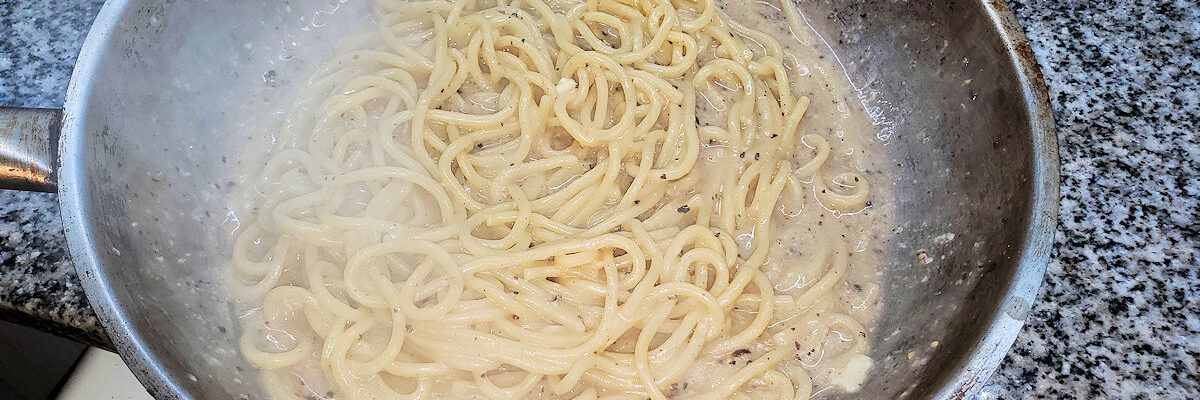

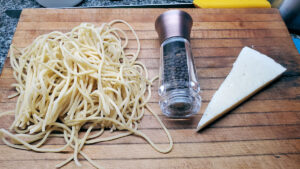
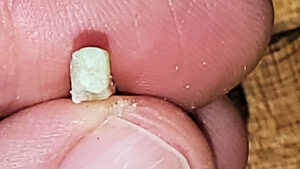
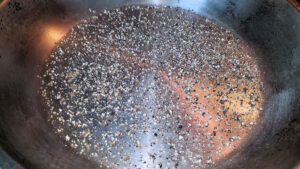
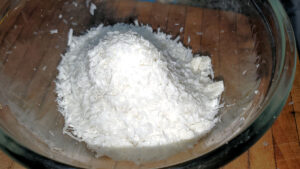
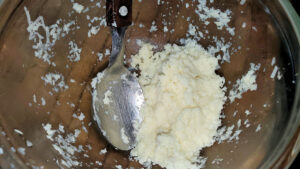
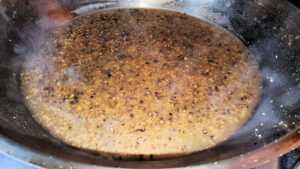
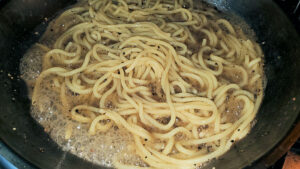
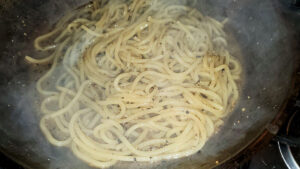
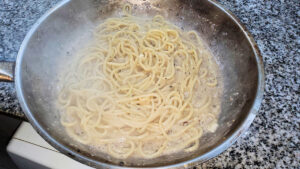
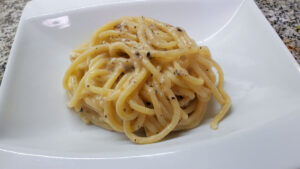
[…] or even, as those from Rome are likely to use, spaghetti alla chitara, which I covered back in the post on cacio e pepe. You could use regular spaghetti if that’s all you have, but I’d assert that […]
[…] being the core ingredients of the “sauce”. Over time, gricia added in pepper; and then cacio e pepe eliminated the pork, probably for economic reasons; amatriciana added in tomatoes and subbed in dried, smoked chilies […]
[…] famed pastas of Rome, and their family tree connections. A quick reference back – gricia, cacio e pepe, carbonara, […]